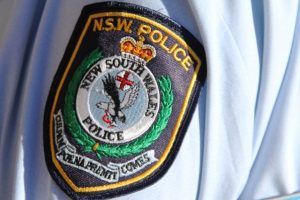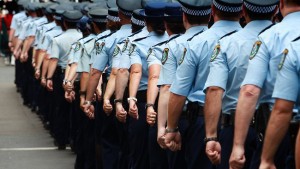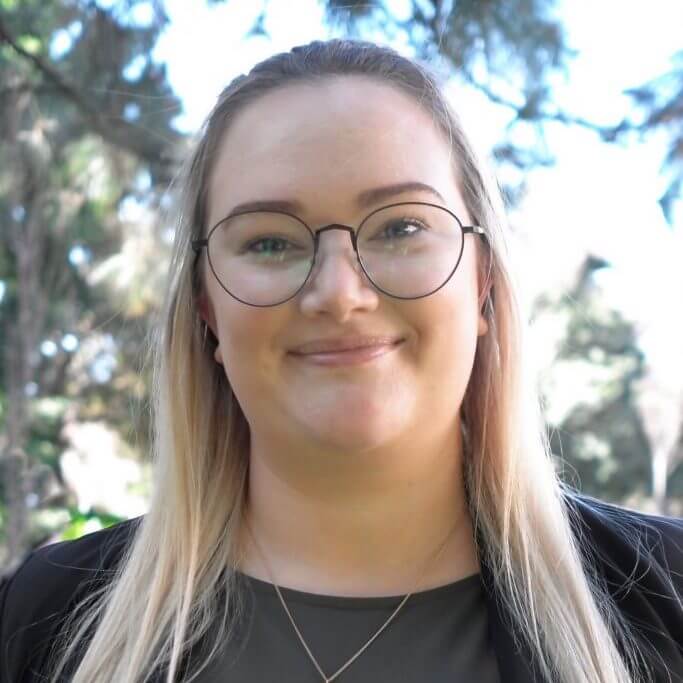Body worn video cameras only turned on when the officer decides
 The NSW Department of Communities and Justice (DCJ) has released the review of the legal framework surrounding body-worn video cameras.
The NSW Department of Communities and Justice (DCJ) has released the review of the legal framework surrounding body-worn video cameras.
As of February 2020, NSW Police had rolled out 4,878 devices. But until officers turn the cameras on, they act only as a heavy brooch.
The only recommendation from the report is to make no changes to current guidelines. “Recommendation 1 – The Act continues to remain in force in its current terms.” This means that the NSW Police Officers will continue to have discretion about when to activate the recording.
The decision is disappointing, to say the least. Groups including the NSW Law Society, Legal Aid, the Aboriginal Legal Service and Redfern Legal Centre, all argued police should follow a mandate to activate the cameras in certain situations.
STATUTORY FRAMEWORK
The requirements for the lawful use of body-worn video footage are that the police officer must be acting in the execution of their duty. The use of the camera must be obvious and if a private conversation is being recorded then the police officer has to be in uniform or tell everyone present that they are a police officer.
The current framework provided to police officers in how to lawfully use body-worn camera’s sets out five guiding principles:
- Body-Worn Video camera equipment will be used by NSW Police in the lawful execution of their duties. Police will use their judgment when deciding to use it and its use will be obvious and overt.
- Body-Worn Video will be used by police to record events, incidents and evidence. There will be some instances where Body-Worn Video should not be used and some occasions when its use may not be appropriate.
- Body-Worn Video supports conventional forms of evidence gathering; it does not replace them.
- Body-Worn Video recordings will be securely processed and managed in accordance with relevant legislation, policy and procedures.
- NSW Police will provide general information to the community on the use of body-worn video by police. (emphasis added)
THE REVIEW
The Department of Communities and Justice (DCJ) undertook the review on behalf of the Secretary of the Department. Submissions were provided by key stakeholders in the issue:
- Aboriginal Legal Service NSW/ACT (ALS)
- Redfern Legal Centre (RLC)
- Information and Privacy Commission NSW (IPC)
- The Law Society of NSW (Law Society)
- Legal Aid NSW (Legal Aid)
- NSW Police Force (NSWPF)
- The Officer of the Director of Public Prosecution (ODPP)
- Police Association of NSW (PANSW)
According to the review, “several stakeholders expressed concerns about the breadth of the discretion police are afforded under s.50A of the Act to use body-worn video.”
BODY-WORN USE CAMERA LEFT TO POLICE DISCRETION
The Law Society, Legal Aid, ALS and RLC stated that police should have to activate body-worn video in certain situations. This may include when exercising a power under the Law Enforcement (Powers and Responsibilities) Act 2002 NSW (‘LEPRA).
ALS and RLC further stated that police should be required to continuously record when in a public place, or at least during interactions with members of the public. ALS and RLC listed the numerous benefits of continuous recording, including:
- possible reduction in excessive use of force by police
- removal of the risk of inconsistent application of the discretion to record
- enabling capture of the full chronology of events in real time
- increased transparency and accountability
- improved police practices
- increased community confidence in police
- possible reduction in racial profiling in the exercise of police powers
- reduction of “camera bias” arising from the fact that encounters are recorded from the perspective of the police officer.
Our Principal Solicitor Peter O’Brien states that the increased use of body-worn cameras will enhance accountability and transparency. “Police Officers should turn on their body-worn video cameras any time that they exercise a police power,” Mr O’Brien stated.
Redfern Legal Centre’s Police Accountability Lawyer Samantha Lee told the ABC that it’s in everyone’s interest for police to press record.
“They’re useful for both parties really. Better transparency in regard to policing practice, it can support the accounts of either party particularly in regard to complaints against police,” she told ABC’s The Law Report.
Samantha Lee told the ABC of a scenario where body-worn cameras should have been rolling. Unfortunately, this is something we see far too often.
“We had one quite serious matter involved an element of mental health concern. Police were called to a property. There were five police officers involved, firearms were drawn in regard to this incident. We were approached by the person who was subject this police power and he was very concerned about what happened in this incident and application was lodged to get access to body-worn video footage for any of the officers. We were informed that none of the officers had their body-worn video footage turned on. Now obviously this is a huge concern, particularly where firearms are drawn. It should be automatic that body-worn video cameras are turned on in those circumstances,” Ms Lee stated.
FIREARMS AND CAMERAS
Earlier this year, the NSW police issued a tender seeking expression of interest for a Bluetooth enabled camera. The camera would turn on and record whenever a firearm was pulled from the holster of a police officer. Not only would the camera of the officer themselves activate, but that of any officer within 100 metres too.
Currently, the tasers used by NSW Police have cameras mounted to them. However, new models provided by the company that supplies the tasers won’t have these cameras, meaning that body-worn cameras will have to be relied on for tasers too.
This type of Bluetooth activated technology is supported by O’Brien Criminal & Civil Solicitors, as an aid to increase the accountability and transparency of police actions, especially when the use of a deadly weapon is involved.
TRANSPARENCY AND ACCOUNTABILITY
 The use of body-worn camera videos not only benefits those at the hands of police powers but also police officers themselves.
The use of body-worn camera videos not only benefits those at the hands of police powers but also police officers themselves.
Two evaluations have been conducted by Charles Sturt University (CSU). Early trends include an increase in conviction rates for assault on police and a reduction in sustained complaints against police officers.
In the second evaluation, over 1600 members of the public were consulted in addition to hundreds of police officer and tens of lawyers.
Eighty-seven per cent of the members of the public surveyed support the use of police body-worn video. Comments included:
- that the cameras provide protection and safety for police and public,
- that they provide increased accountability for police and public behaviour and
- that it should be mandatory for all operation NSWPF officers at all time
Since the implementation of the body-worn cameras, there has also been a “marked reduction” in the number of complaints against NSWPF officers.
There is also support from the Victim of Crime Advocacy Group which stated that the cameras provide a form of protection for victims of crime in court hearings, that the cameras capture evidence at a time when a victim may be unable to recall details and that it reduces the potential for further victim trauma in recalling an incident for the court.
In the review, it was stated that the constant recording, or the mandated recording in certain circumstances, was “not a practical solution”. The DCJ states that constant recording could capture confidential information and would result in “inappropriate surveillance of police officers and breach their personal rights to privacy”.
PROTECTING VULNERABLE PEOPLE
The DCJ stated that that discretion of body-worn video activation helps to protect vulnerable people. We disagree. Vulnerable members of our community, including young, disabled, mentally ill or Aboriginal and Torres Strait Islander people would be more protected by the use of the cameras. We’ve seen throughout the Black Lives Matter movement that the explicit recording of police brutality is often the only thing that can assist in bringing justice to those who have been affected by this behaviour.
Body-worn video footage is not automatically released to the public and the footage would be what the police officer was involved in themselves. Any footage obtained that is later confirmed to be confidential, private or especially involving vulnerable people, can be deleted.
We urge the Department of Community and Justice to re-visit the mandated activation of body-worn cameras when police are exercising any of their powers. The transparency and accountability on both the behaviour of alleged offenders and police officers would enhance trust between the community and the police and serve to protect the rights of the community.
If you have been affected by police actions contact O’Brien Criminal & Civil Solicitors on 02 9261 4281 or .


